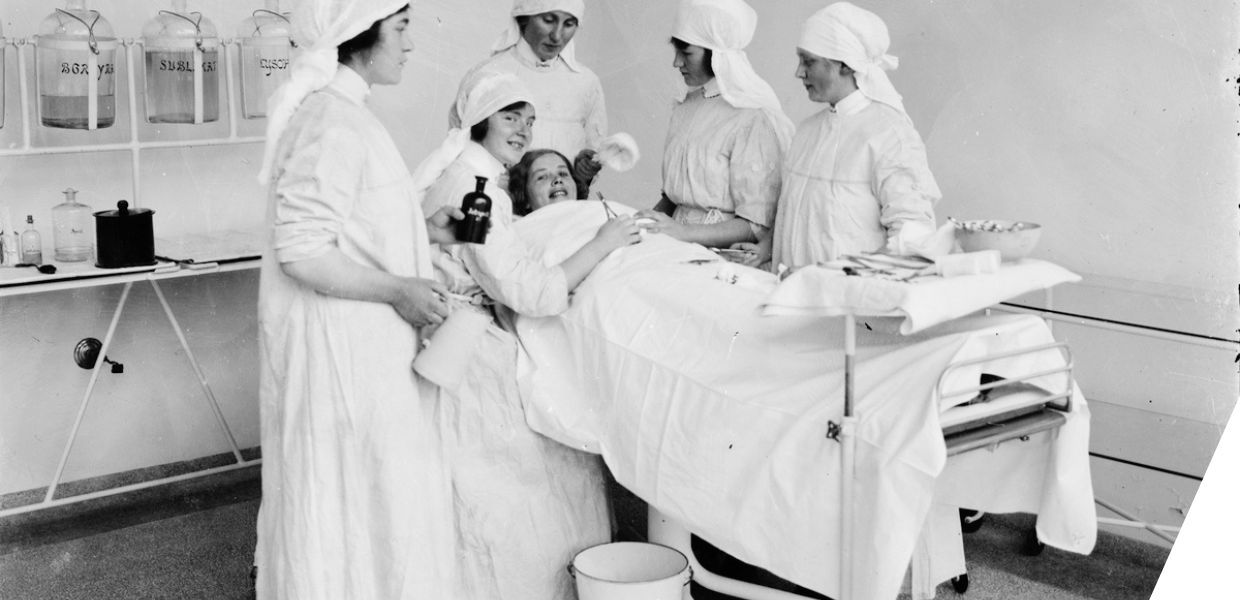Impact Surgery: a deep dive into measuring meaningful change in cultural heritage projects
I’m happy to share some reflections for the benefit of future ‘patients’ considering a session at an Impact Surgery: the one held in December 2024 proved to be a rewarding and inspiring experience. The event, though modest in size, was rich in enthusiasm, insight, and meaningful exchange. Most importantly, it brought clarity and structure to what often feels like a nebulous concept—impact assessment.
Prior to the session, the organisers invited me to prepare a short presentation on a project I’ve been closely involved with, along with a few key questions related to its impact. The format was simple: an open online gathering where participants could present projects, ask questions, and receive targeted guidance from experienced facilitators—our so-called ’surgeons.’
Despite the playful metaphor, the Impact Surgery process is nothing to fear. On the contrary, it's a collaborative and energising format designed to help participants walk away with practical strategies and fresh ideas on how to approach the ever-elusive task of measuring the impact of their work. Whether you're just beginning to think about impact or are knee-deep in evaluation, it offers valuable takeaways that can support and strengthen your approach.
The 'To Write Freely' project: documenting the censorship of press freedom
The project I presented is called ‘To Write Freely’, a digital portal developed to document and analyse historical press censorship in Croatia. It launched in 2022 as a joint initiative of the National and University Library in Zagreb, the Croatian State Archives, and Zagreb City Libraries.
At its core, 'To Write Freely' is a portal for exploring censored historical newspapers alongside archival material that exposes how and why the censorship occurred. Rather than simply showcasing redacted or incomplete issues, the platform endeavours to reconstruct and contextualise the missing pieces. The goal is to illuminate not just what was censored, but the process of censorship—making it visible, understandable, and researchable.
This effort is both ambitious and timely. In an era where misinformation and media suppression are rising global concerns, preserving and presenting documentary heritage about censorship becomes a civic and institutional responsibility. The project’s mission aligns strongly with the values of press freedom and transparency. But as we neared two years since its launch, we were faced with important questions: did we truly achieve what we set out to do? What has changed as a result? What is the real impact—and how do we measure it?
The surgery: tools and techniques for measuring impact
These were the questions I brought to the Impact Surgery, and the responses I received were eye-opening. The facilitators leaned heavily on the Europeana Impact Playbook, a highly useful framework that helps cultural heritage professionals plan, measure, and narrate the impact of their work. Each piece of feedback I received pointed me toward a clearer understanding of how to evaluate outcomes—not just in terms of user numbers or digital reach, but in terms of real, transformative change.
One of the core insights from the session was the importance of thinking about impact from the very beginning of any project. Too often, we focus all our efforts on implementation and only think about evaluation at the very end—if at all. The Impact Playbook encourages a more integrated approach, where impact goals are baked into the project’s design and delivery from day one.
The instructors also emphasised the need to define levels of change. This was particularly helpful for me when reflecting on the outcomes of the To Write Freely portal.
My Takeaways: Understanding Change Across Four Levels
From the discussion, I began to understand the portal’s potential impact through four levels:
Level 1: Operational impact
This is the most visible and immediate change. The portal virtually reunites pre- and post-censored versions of newspapers. This in itself is a major achievement in terms of access and preservation—an operational success that enhances the historical record.
Level 2: Methodological innovation
The project introduces a unique method for documenting censorship by combining archival records with what is not found—the absence as evidence. This approach could set a precedent for how other institutions document similar phenomena, highlighting a significant innovation in cultural heritage practices.
Level 3: Community and societal value
This is where things get more complex. How is this resource being used by the public, researchers, students, or journalists? Is it changing how people understand the history of censorship or how they engage with the media today? The social value is there, but requires deeper inquiry and perhaps a longer time frame to fully emerge.
Level 4: Institutional Legacy
Finally, there’s the long-term question: could documenting censorship become a new, trusted public service offered by libraries and archives? Given the high levels of public trust these institutions enjoy, this could represent a powerful legacy—ensuring that future generations understand the mechanics and dangers of media suppression.
Looking ahead: why impact matters
Participating in the Impact Surgery not only clarified how to measure impact, but also why it matters. Understanding the change your work makes—whether in knowledge, attitudes, behaviours, or systems—is critical if we want our institutions to evolve, remain relevant, and serve the public good. For To Write Freely, the journey is ongoing. The Impact Surgery session has given me tools, frameworks, and above all, new questions that will shape the project’s next phase.
If you’re working on a cultural heritage initiative and wondering whether your efforts are making a difference, I highly recommend undergoing a little ‘surgery’ yourself. It might just provide the perspective you didn’t know you needed! Get in touch with impact@europeana.eu to find out more.
To hear more about Impact-related events and resources, we also encourage you to join the Europeana Impact Community!

